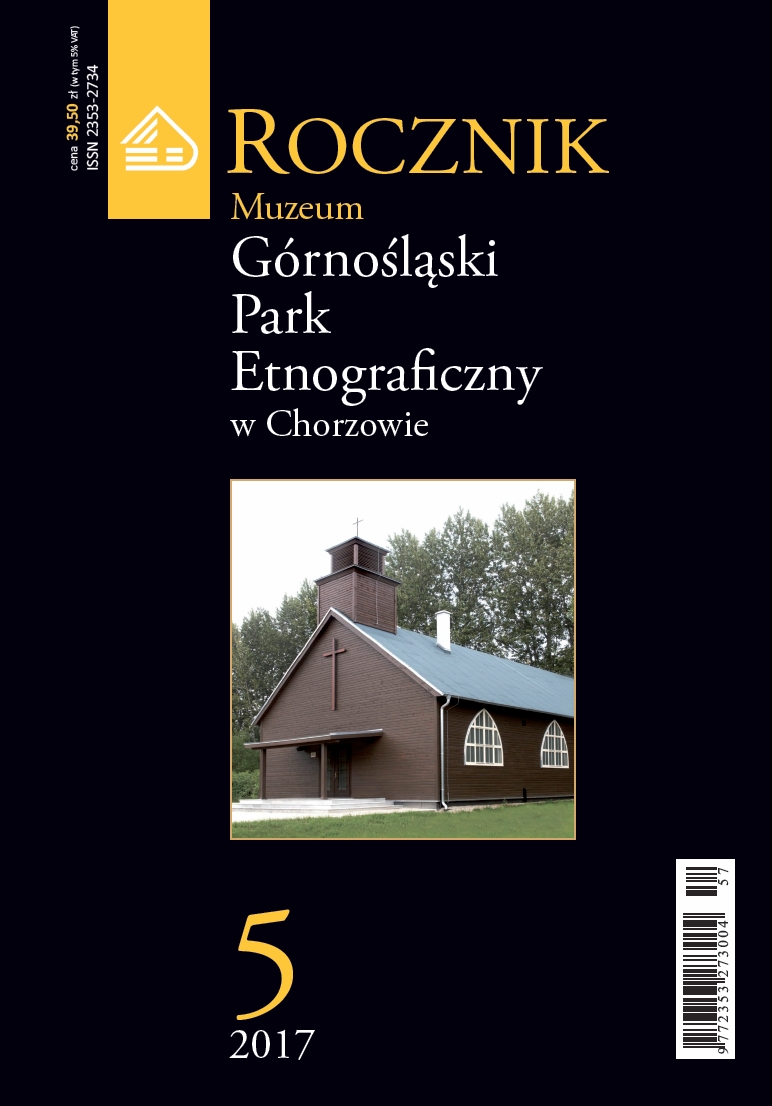Kościół ewangelicki z Bytomia-Bobrka. Wybrane problemy konserwatorskie w obiekcie o charakterze tymczasowym wykonanym z materiałów nietrwałych i nietypowych
The Evangelical Church from the Bobrek District of Bytom. Selected Preservation Issues Encountered During the Works on a Temporary Facility Made of Non-durable and Untypical Materials
Author(s): Krzysztof WieczorekSubject(s): History, Fine Arts / Performing Arts, Architecture, Geography, Regional studies, Recent History (1900 till today), History of Art
Published by: Wydawnictwo Muzeum „Górnośląski Park Etnograficzny w Chorzowie”
Keywords: wooden church; evangelical church; conservation
Summary/Abstract: The article presents selected preservation problems encountered during the relocation and reconstruction of the partly burnt wooden Evangelical Church of the Augsburg Confession from the Bobrek District of Bytom erected in 1932 in a light-frame construction with elements of glued wood. Restoration and construction works concerning the church’s foundation in the Museum “Upper Silesian Ethnographic Park in Chorzów” lasted from November 2016 to September 13, 2017, and were completed with the solemn reconsecration of the church. The church from the Bobrek District of Bytom belongs to a group of prefabricated wooden objects of temporary character erected in the area of Upper Silesia in the interwar period of the 20th century. The church was manufactured by the “Christoph Und Unmack” AG Niesky (O.L.) company. During the restoration works it was necessary to solve a number of problems resulting from: untypical construction of the girders and main supporting and stabilizing elements which were made of glued wood; use of non-durable building materials in the form of low quality wood, as well as insulating, covering, installation and decorating materials; temporary and cheap character of the object, which was the reason for erecting the church from the Bobrek District of Bytom with the use of the most simplified and thus the easiest structural solutions and joinery. Additional obstacles encountered during the works included: inventory mismanagement, dismantling and security of the object during translocation and storage of the dismantled material; the lack of the clear legal requirements concerning the scope of fire protection of wooden objects and the knowledge of the properties of recommended preservative and protective agents; the need to adapt the facility to new functions in accordance with the modern requirements of the Building Law Act of July 7, 1994; the current opinion of the local community on the value of the original church decor originating from the period when the church was mainly used by the evangelical community of German nationality.
Journal: Rocznik Muzeum „Górnośląski Park Etnograficzny w Chorzowie”
- Issue Year: 2017
- Issue No: 5
- Page Range: 177-195
- Page Count: 19
- Language: Polish

